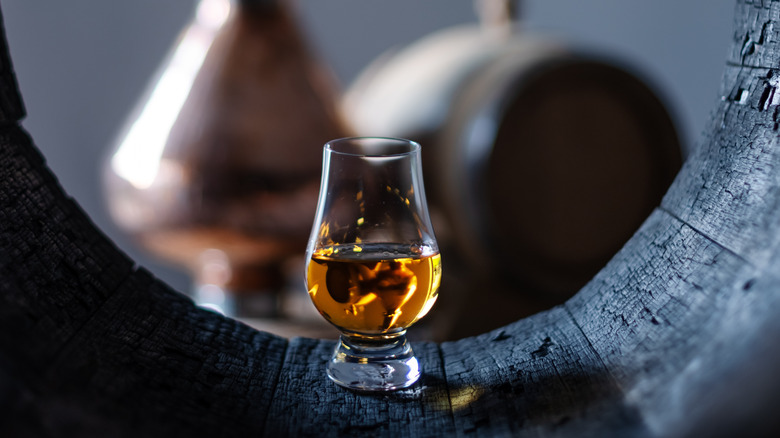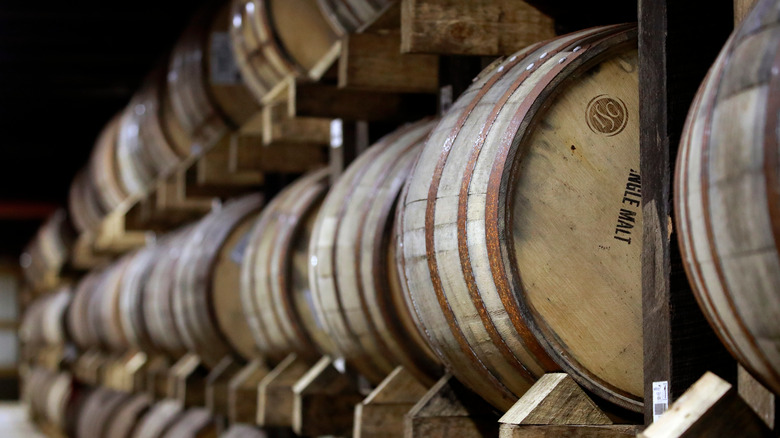The Unique Way Air Affects Bourbon Aging
Bourbon- and whiskey-making is a fine balance of science and art. Beyond the raw materials used to make the drink itself, air pressure, temperature, and humidity all can impact how a final blend will taste. In India, where hot, humid climates help speed up the maturation process of alcohol, blends can be bottled more quickly than in cooler regions like Scotland. In places where colder temperatures are the norm, cold air restricts the activity of yeast during the fermentation process, resulting in more time for a mature beverage to come to fruition. When it comes to bourbon, however, the flavors of the American-born drink can be impacted by the weather and climate of its place of origin: Kentucky.
Bourbon is known to pack a punch, and this is largely due to the temperatures and humidity found in the state of Kentucky. Consistently hotter days translate into evaporated water inside of the aging barrels — a concept known as the angel's share — and results in a sped-up maturation process that delivers a hearty liquid with a considerable ABV.
When the invisible has considerable impact
Even within one distillery's warehouse, fluctuations in temperature can vary from floor to floor in a given building. Master distillers often use this to their advantage, intentionally placing barrels to age on higher or lower levels in order to impact the flavor of unique blends. One of Jack Daniel's master distillers told us that the highest floors of whiskey and bourbon warehouses are akin to prime real estate; on the top story, hot, humid air can kick the aging process of bourbon into higher gears, giving distilleries beverages that can be bottled sooner.
Many bourbon-storing warehouses have strategically built racks that expose each aging barrel to air. And while some labels carefully control the climate and temperature of their wares, others encourage temperature fluctuations, as the wooden barrels will expand and constrict in accordance with the changing temperatures. Such deviations in air and temperature can yield rich, nuanced flavors for true bourbon drinkers to note and enjoy, so the next time you pour yourself a dram, consider all of the elements that have come together to put the drink in your hand — air included.

